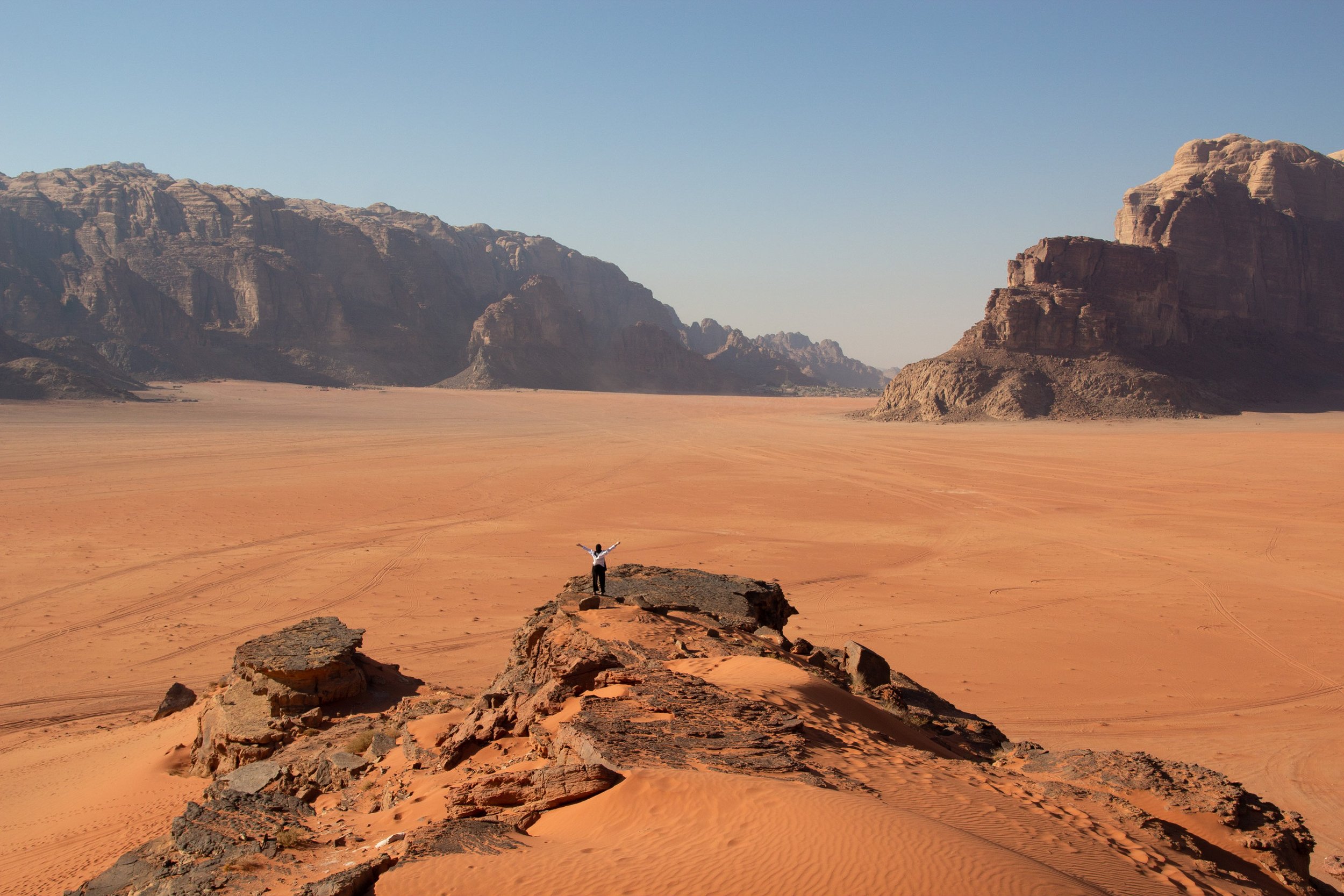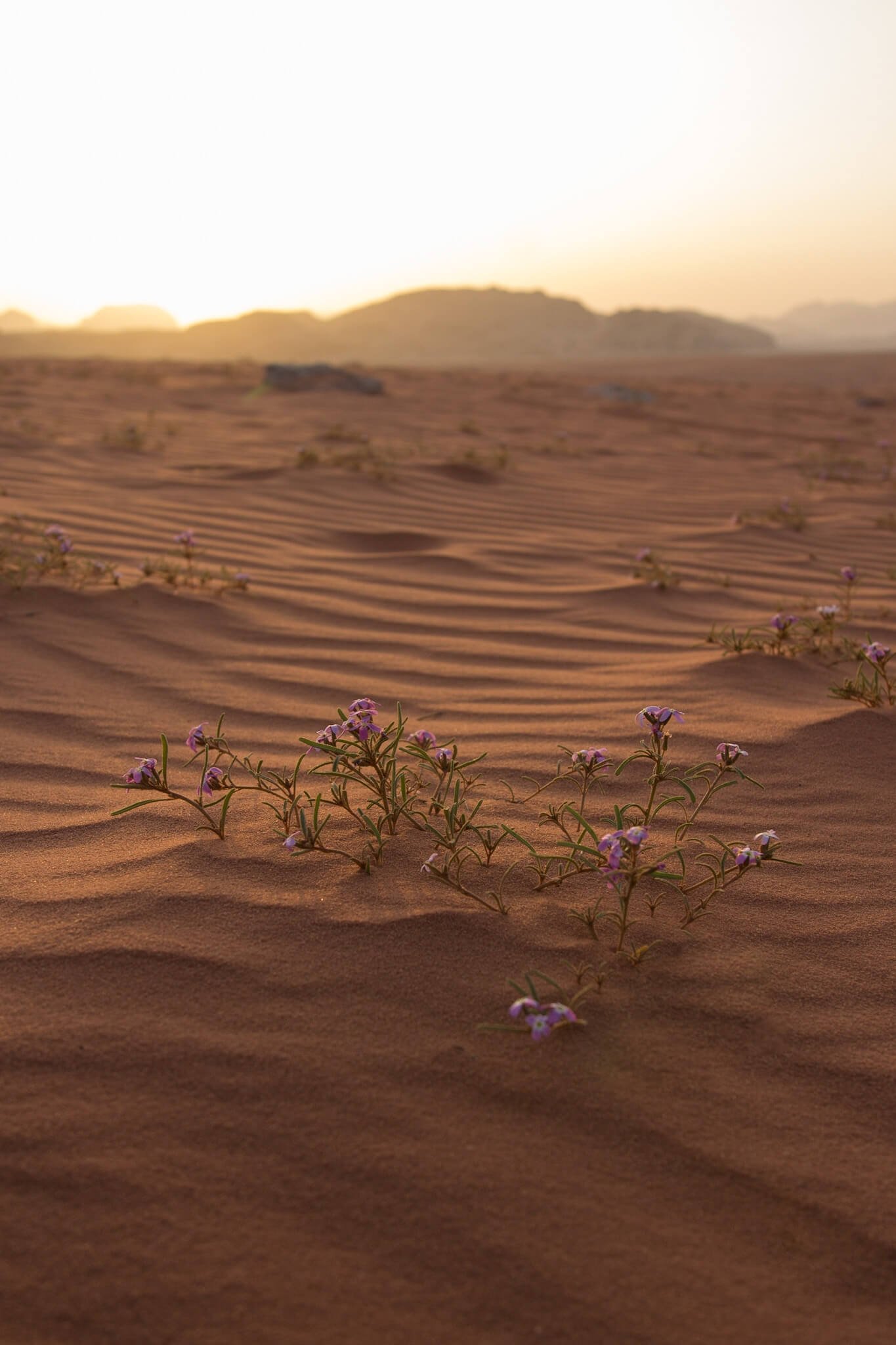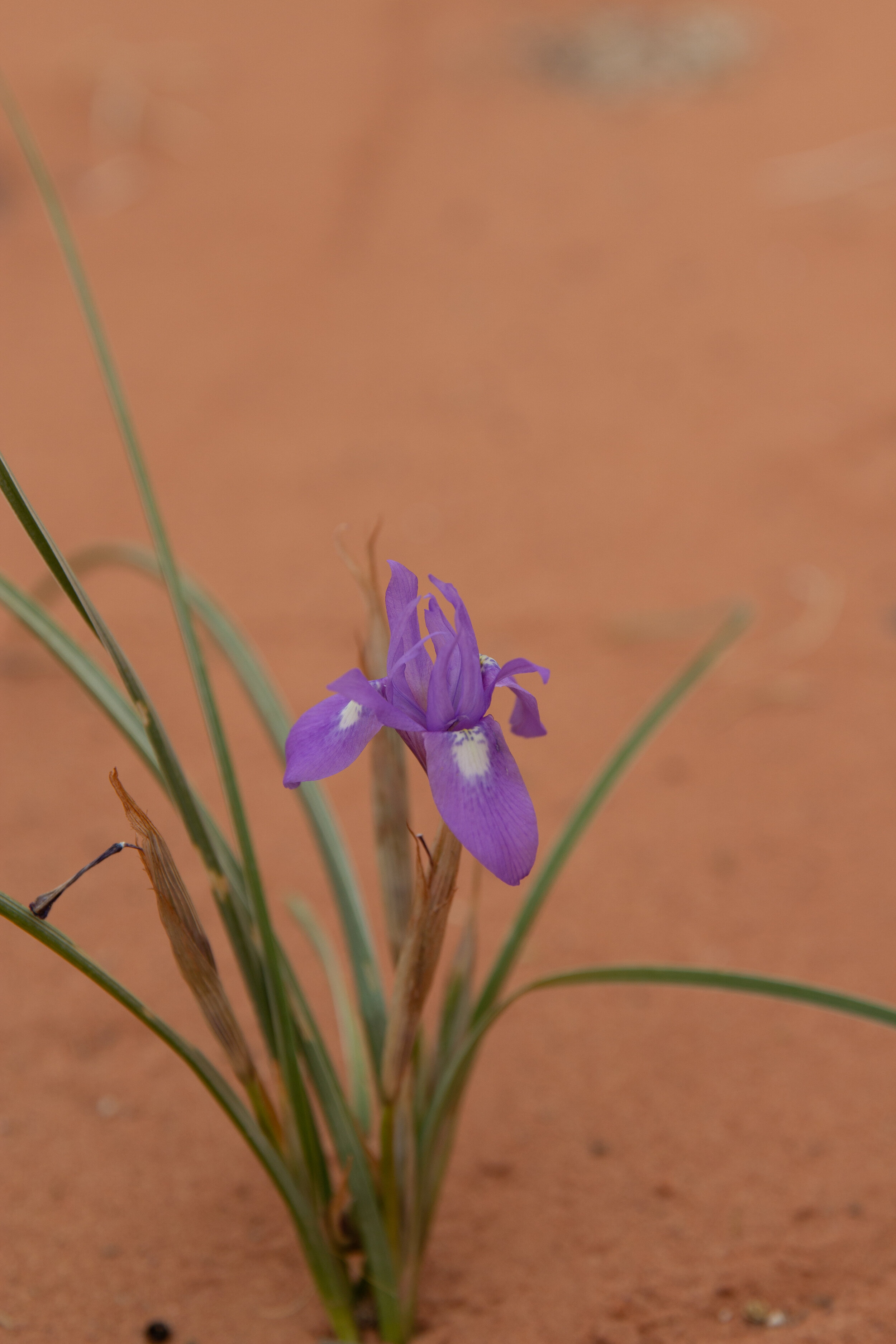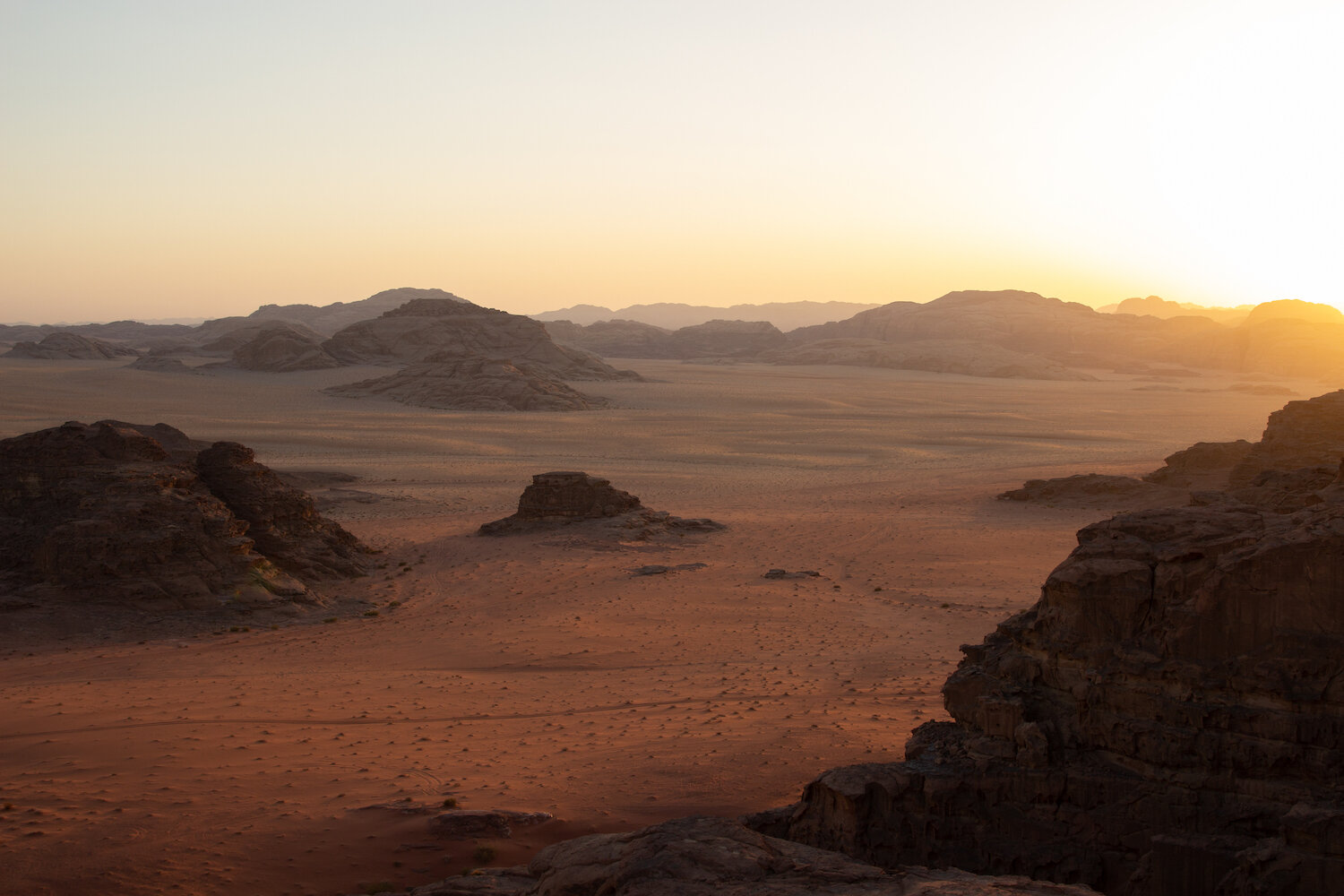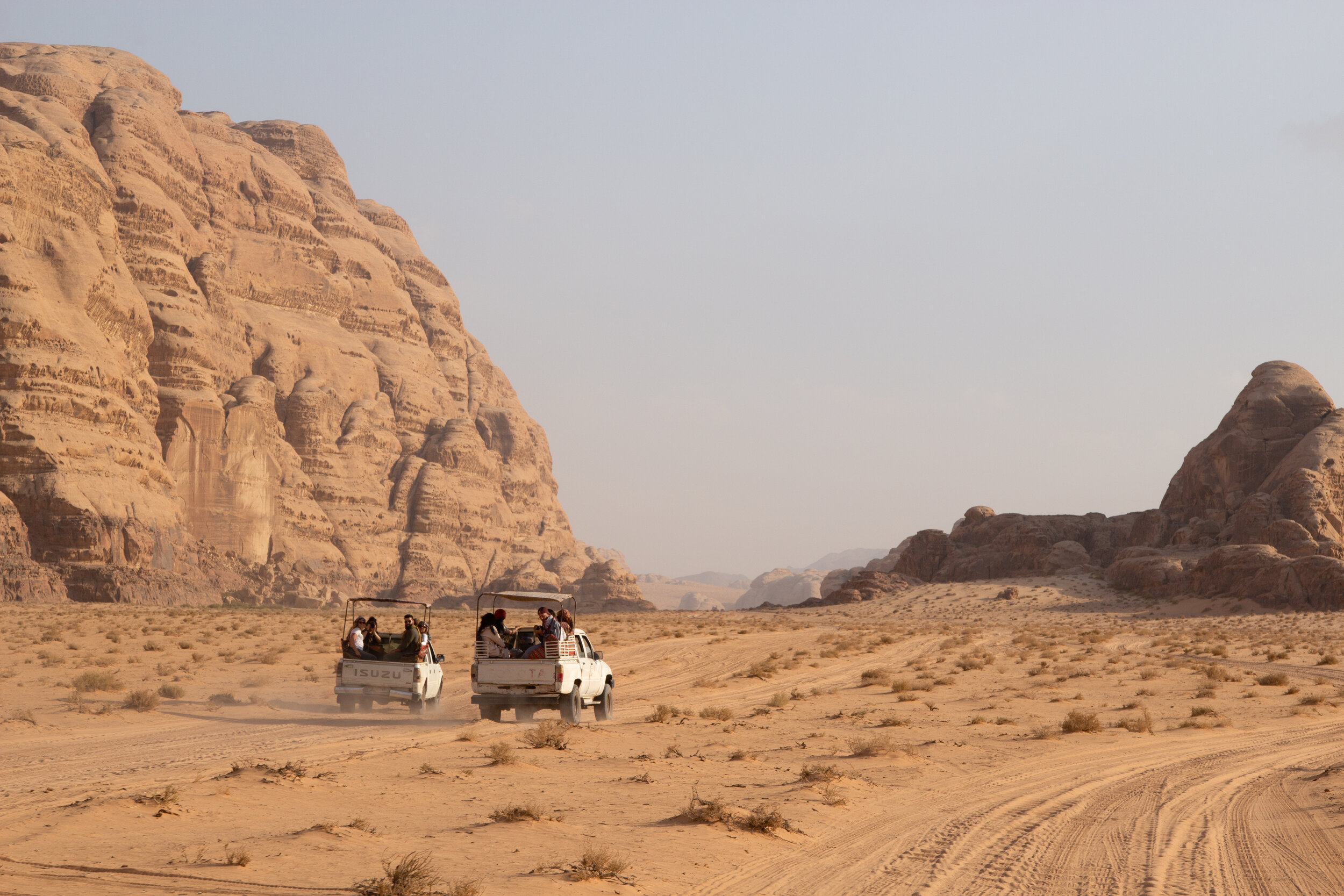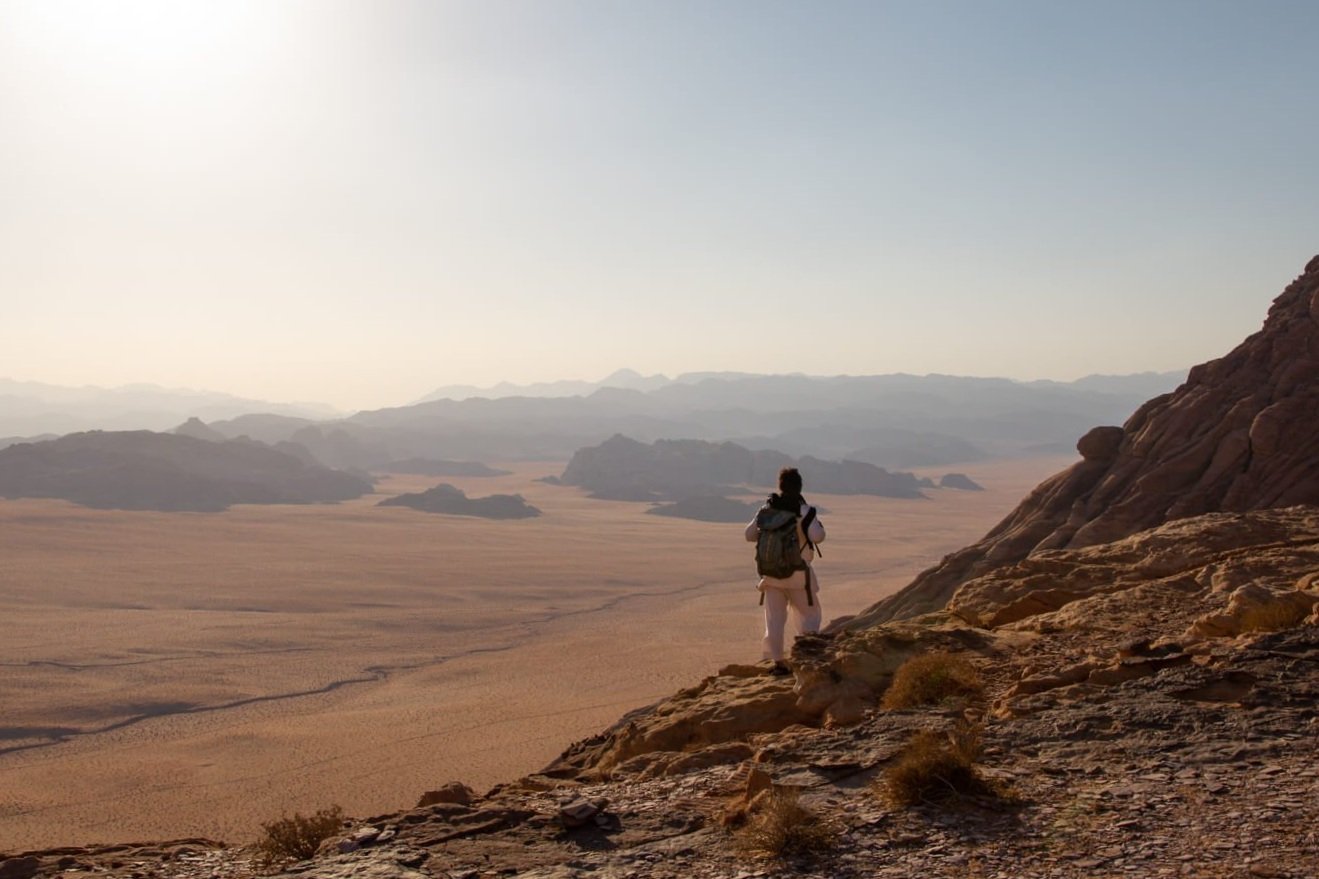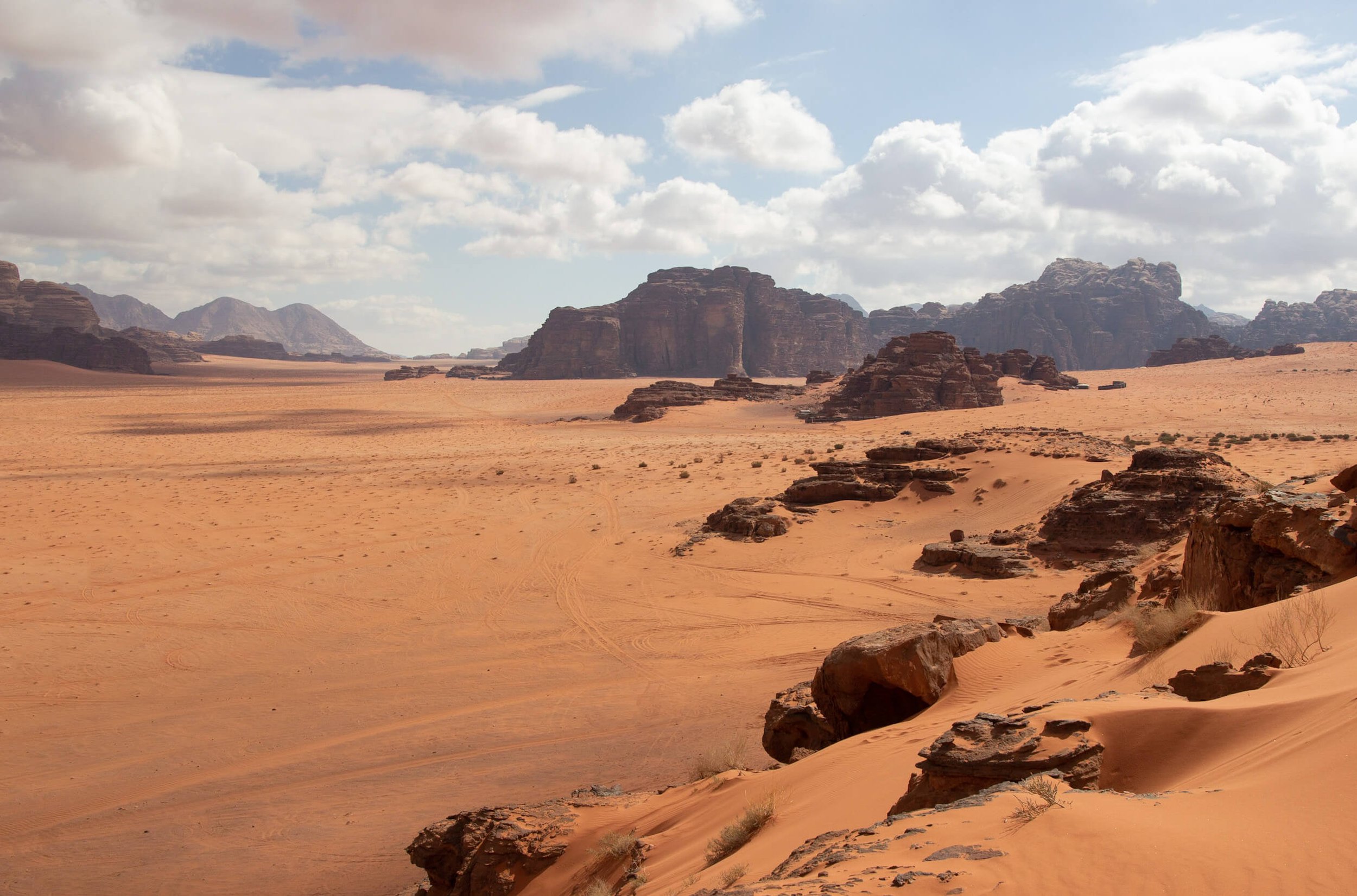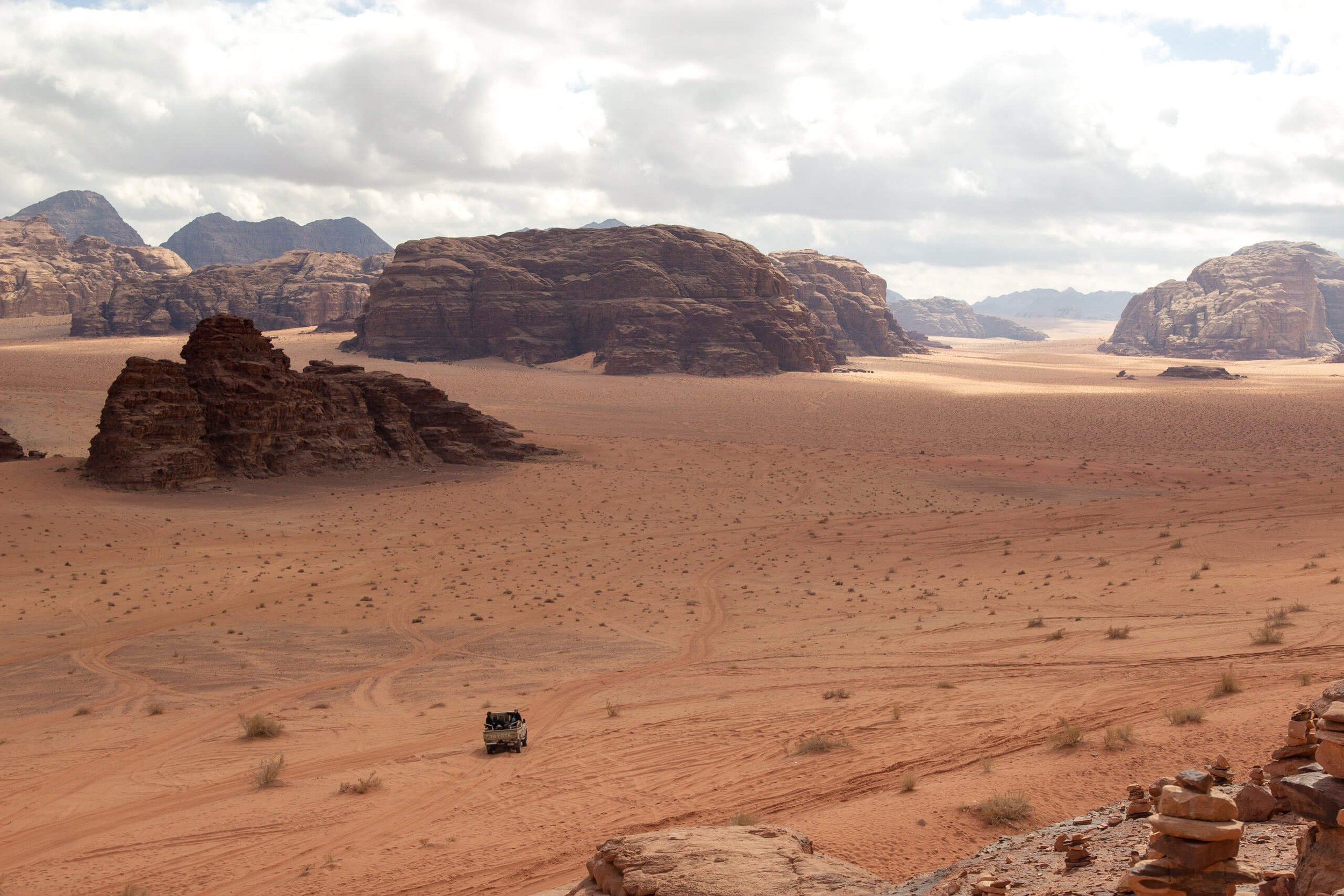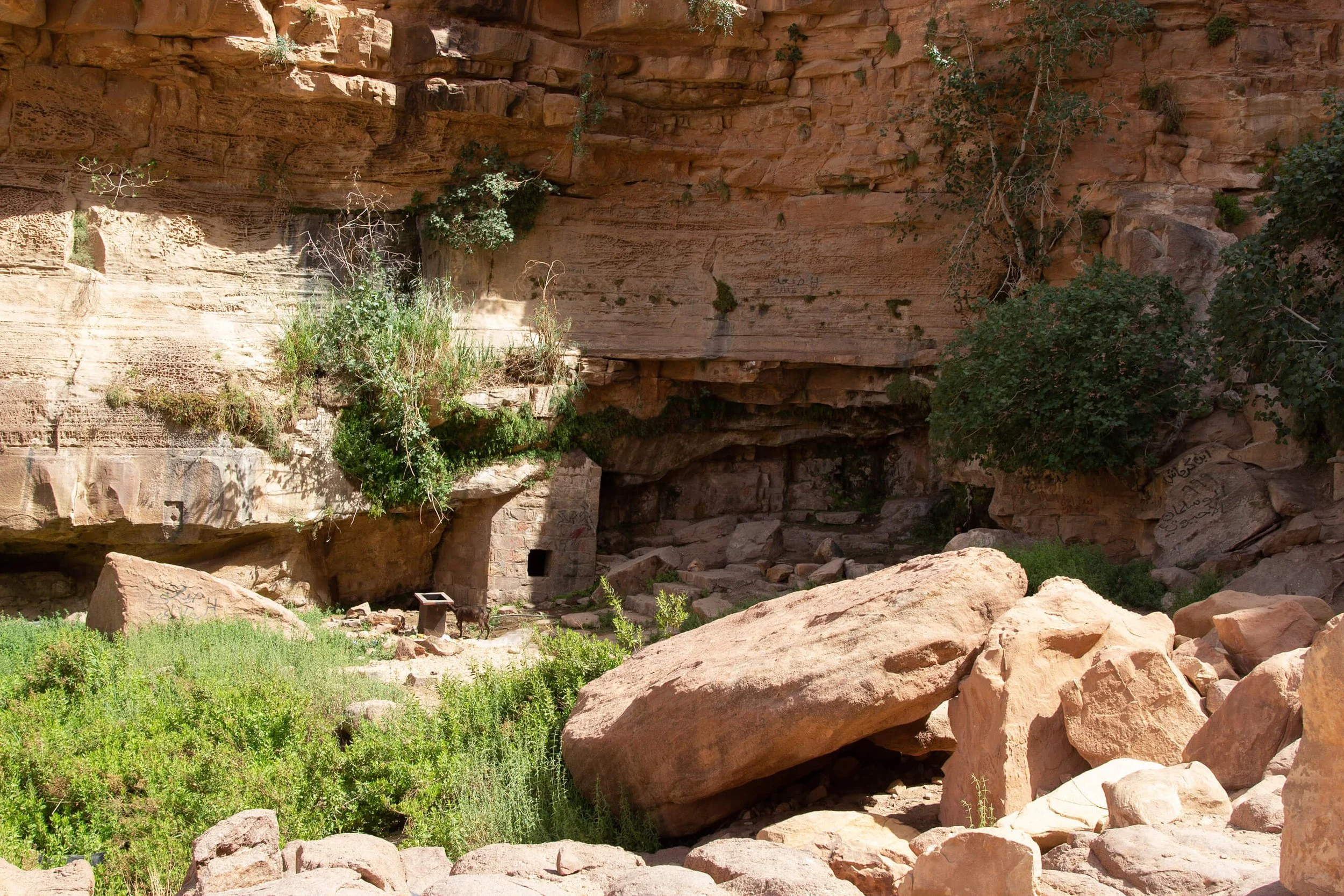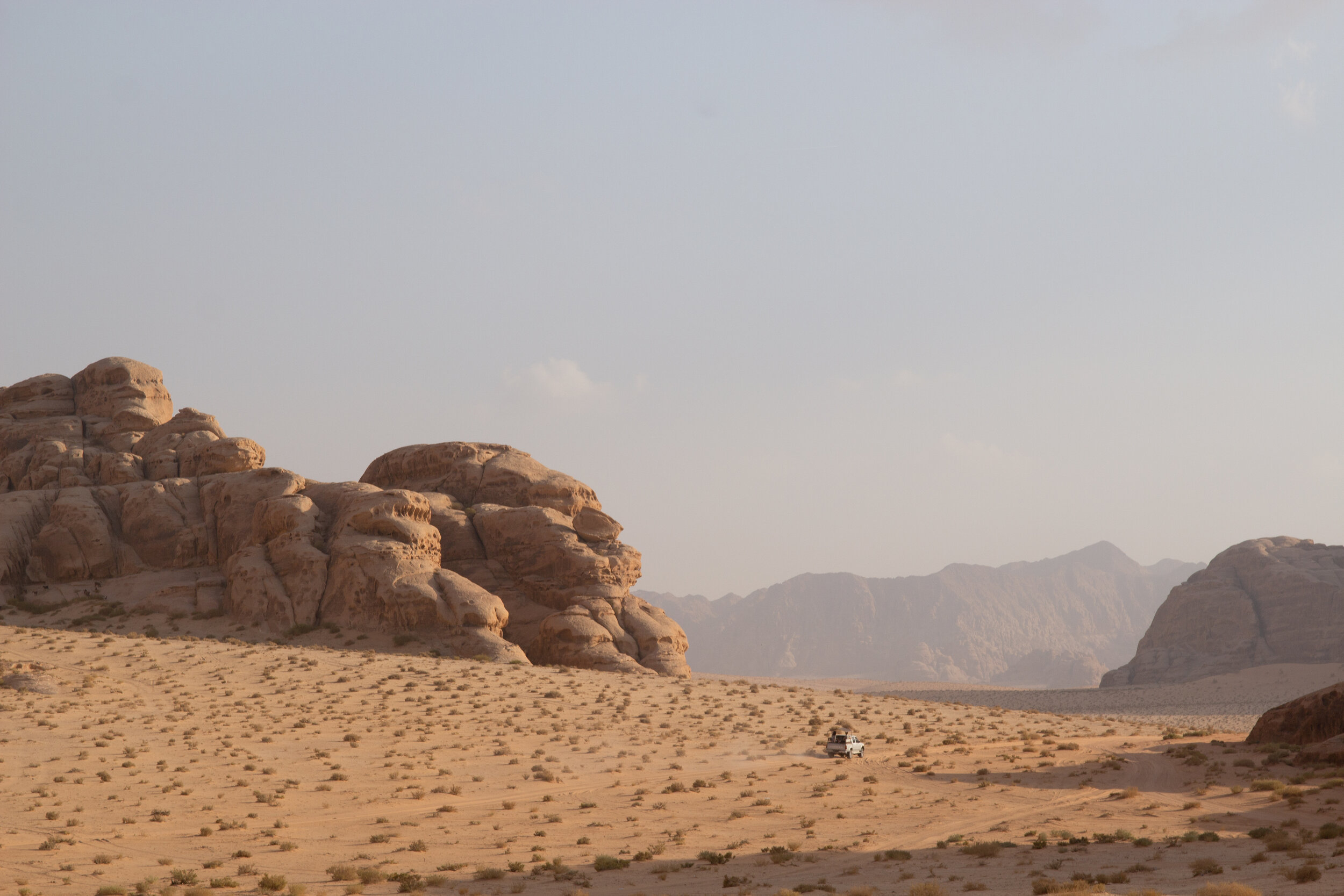The Best Time to Visit Wadi Rum
There’s no doubt that a trip to Wadi Rum will be an unforgettable experience, with breathtaking desert scenery, delicious local food and camping beneath the stars. But when exactly is the best time to plan your trip? The weather in Wadi Rum varies between seasons, with hot summers and cold winters. Spring and autumn experience nice daytime highs and mild nights, which are the best seasons for sightseeing and hiking without overheating by the sun. Although these months are busier, if you visit around the shoulder seasons, you should avoid the major crowds.
Seasonal Overview
Spring in Wadi Rum
The spring season is from March to May.
The spring months are a wonderful time to visit Wadi Rum, with abundant sunshine and warm weather, perfect for desert tours and hiking. Daytime temperatures range between 18°C and 28°C, and the chill of winter nights has lifted. This season still brings rain, thunderstorms, and the occasional sandstorm, so prepare accordingly. Spring is one of the most picturesque seasons in Wadi Rum, as wildflowers bloom across the desert.
Spring months are the busiest months to visit Wadi Rum, so the desert sights and famous landmarks are crowded and busier compared to other seasons. To escape the crowds, we recommend our Bedouin Steps Tour, Day Hike Tours and our Desert Vibrations Trek at the beginning of the season.
Spring Temperature Averages in Wadi Rum
March High: 20°C, Low: 7°C
April High: 24°C, Low: 11°C
May High: 28°C, Low: 15°C
Best Tours: Bedouin Steps Tour, Burdah Arch Day Hike, Wild White Desert Tour, Desert Vibrations Trek and Camel Trekking.
What to Wear: Lightweight and loose-fitting clothes - T-shirts, cotton shirts, and shorts or loose pants. Sun hat or bedouin scarf, sunglasses and sunscreen is essential. Comfortable walking shoes or sandals. Warm clothing and a jacket are still needed at the beginning of the season.
Hiking in Spring: The warm weather makes this season an ideal time to hike in the desert. Towards the end of the season, day hikes begin earlier in the morning to avoid high afternoon temperatures. From mid-May, the weather is generally too hot for hiking, but it can be possible if maximum temperatures aren’t reached, depending on the year.
Summer in Wadi Rum
The summer season is from June to August.
During the summer months, Wadi Rum experiences hot and dry weather conditions, with daytime temperatures ranging from 32°C to 38°C. On particularly hot days, temperatures can reach up to 40°C, making it quite uncomfortable to venture out in the desert. To avoid discomfort, it's best to plan your excursions during the morning or late afternoon for sunset. The number of visitors during this time is typically low, which means you can enjoy the sights without the usual crowds.
At night, temperatures drop to 20-25°C and 16-22°C at dawn. The desert warms up quickly in the morning but cools in the late afternoon because sand doesn’t retain heat, making the desert up to 7°C cooler at night than Aqaba.
Summer Temperature Averages in Wadi Rum
June High: 32°C, Low: 18°C
July High: 33°C, Low: 19°C
August High: 33°C, Low: 19°C
Best Tours: Sunset Excursion, 3 Hour Desert Tour and Sunrise Camel Tour. No hiking or camel trekking in this season.
What to Wear: Lightweight and loose-fitting clothes in light colours - T-shirt or tank top with a long-sleeve cotton shirt overtop, and shorts or loose pants. Sun hat or bedouin scarf, sunglasses and sunscreen are essential. Comfortable walking shoes or sandals.
Hiking in Summer: During the summer, the weather in Wadi Rum becomes too hot for hiking. Summer is a difficult and dangerous period to hike in the desert due to the high temperatures and constant sun exposure.
Perseid Meteor Shower: Watch the annual Perseid Meteor Shower without any light pollution from mid-July through the end of August. Wadi Rum is one of the best locations in Jordan to witness the phenomena, where you can stay overnight in our Desert Camp or camping Under the Stars.
Autumn in Wadi Rum
The autumn season is from September to November.
Autumn months are a great time to visit Wadi Rum as the intense heat of summer has eased and cooler weather sets in, making it the perfect time for desert tours, hiking and camel treks. The average temperature in Wadi Rum sits around 20-27°C, and night temperatures begin getting cooler. November marks the beginning of cooler weather as temperatures drop significantly and the first rain falls. The nights can get very cold, so make sure you pack warm clothing.
During this time of year, when the sun is low and the air is clear, Wadi Rum comes to life with a stunning kaleidoscope of colours and textures. Sunrises and sunsets are spectacular, and the mild weather makes it possible to spend more time taking photos.
As this is the peak season, visitor numbers are at their highest. So be sure to plan your trip to Wadi Rum in advance. We recommend our Bedouin Steps Tour, Day Hike Tours and Desert Vibrations Trek to escape the crowds.
Autumn Temperature Averages in Wadi Rum
September High: 30°C, Low: 17°C
October High: 26°C, Low: 14°C
November High: 20°C, Low: 8°C
Best Tours: Sunset Excursion, Bedouin Steps Tour, Jebel Um Ad Dami Day Hike, Sunrise Summit Tour, Desert Vibrations Trek and Camel Trekking
What to Wear: Lightweight and loose-fitting clothes - T-shirts and cotton shirts, shorts or loose pants, sun hat or bedouin scarf, sunglasses, sunscreen, walking shoes or sandals. From late October, a warm jumper and a warm jacket are needed at night.
Hiking in Autumn: October marks the beginning of the hiking season when the summer heat begins to fade away. September is generally too hot for hiking, but it can be possible if maximum temperatures aren’t reached, depending on the year.
Winter in Wadi rum
The winter season is from December to February.
The weather in winter is relatively mild; you can expect bright sunny days interspersed with cloudy days that will bring rain, wind and thunderstorms. The average daytime temperatures range between 8°C to 20°C, while night temperatures can drop to 4°C or lower. Even though it’s cold at night, you should still visit Wadi Rum - you just need to be prepared! Most rainfall occurs in Wadi Rum between November and April.
December can be busy, due to holiday getaways, especially over the New Year. January and February are the low season, and if you don’t mind the cold weather with chances of rain showers, you can enjoy the sights without the usual crowds.
Winter Temperature Averages in Wadi Rum
December High: 15°C, Low: 4°C
January High: 14°C, Low: 2°C
February High: 16°C, Low: 4°C
Best Tours: Full Day Desert Tour and 4 Hour Desert Tour. No camel treks in this season.
What to Wear: You’ll need plenty of warm clothing - a puffer/down jacket, knit or fleece jumpers, warm trousers, warm base layers, and a warm hat. Winter pyjamas and wool socks to wear at night. Comfortable trainers or walking shoes.
Hiking in Winter: If you don’t mind the cold, winter can be a nice time to go hiking in Wadi Rum. The mornings are cold, but you’ll start to warm up once the sun comes out. The temperature will drop once the sun sets, and it’s very cold at night. Always bring warm layers during the winter!
The weather is more unpredictable during this season. If your itinerary is flexible, I recommend checking the forecast a few days before and booking a hike when the weather is pleasant. You can see Wadi Rum’s weather forecast at this link: arabiaweather.com
Camping in Winter: Yes, it will be cold. But this is something you can prepare for. Bring warm layers of clothes to adjust to the varying day and night temperatures. Don't forget to bring items like wool socks and a warm hat. Tent cabins in our Desert Camp have warm duvets and thick blankets. We sit around the campfire late into the night and keep you going with lots of hot tea. And for adventurous campers sleeping Under the Stars, we choose sheltered sites protected from the wind and provide warm sleeping bags and thick blankets for sleeping.
Stargazing: Most nights are clear with very good visibility, but some nights will have cloud cover and limited stargazing opportunities.
If you are planning a trip to Wadi Rum, continue exploring our site to read about our desert tours and accommodation options.

